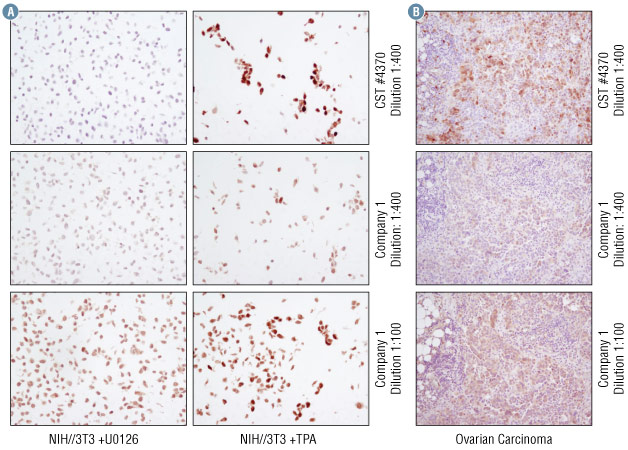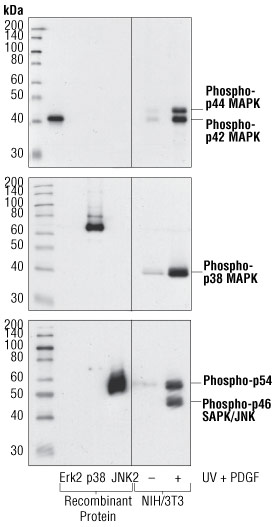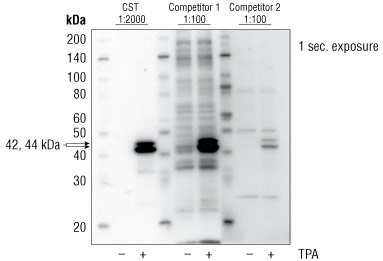The MAPK/Erk signaling cascade is activated by a wide variety of receptors involved in growth and differentiation including receptor tyrosine kinases (RTKs), integrins, and ion channels. GPCRs (G-Protein Coupled Receptors) activate the MAPK cascade using a different set of adaptors.
The specific components of the cascade vary greatly among different stimuli, but the architecture of the pathway is similar:
Activation of Erk (extracellular signal regulated kinase) requires the phosphorylation of Thr202 and Tyr204 amino acid residues.
NIH/3T3 cell pellets (Figure A) treated with either TPA (to induce Erk phosphorylation) or U0126 (to inhibit Erk phosphorylation) (Figure B) paraffin embedded ovarian cancer sections.


Western blot analysis of purified MAPK phospho-proteins or extracts from NIH/3T3 cells treated with UV light and PDGF, using Phospho-p44/42 MAPK (Erk1/2) (Thr202/Tyr204) (197G2) Rabbit mAb #4377 (upper), Phospho-p38 MAPK (Thr180/Tyr182) (3D7) Rabbit mAb #9215 (middle), and Phospho-SAPK/JNK (Thr183/Tyr185) (98F2) Rabbit mAb #4671 (lower).
Function: Activation of Erk (extracellular signal regulated kinase) requires the phosphorylation of Thr202 and Tyr204 amino acid residues.
Samples: Jurkat cells were treated with TPA, a phorbol ester that activates PKC to induce Erk phosphorylation.
